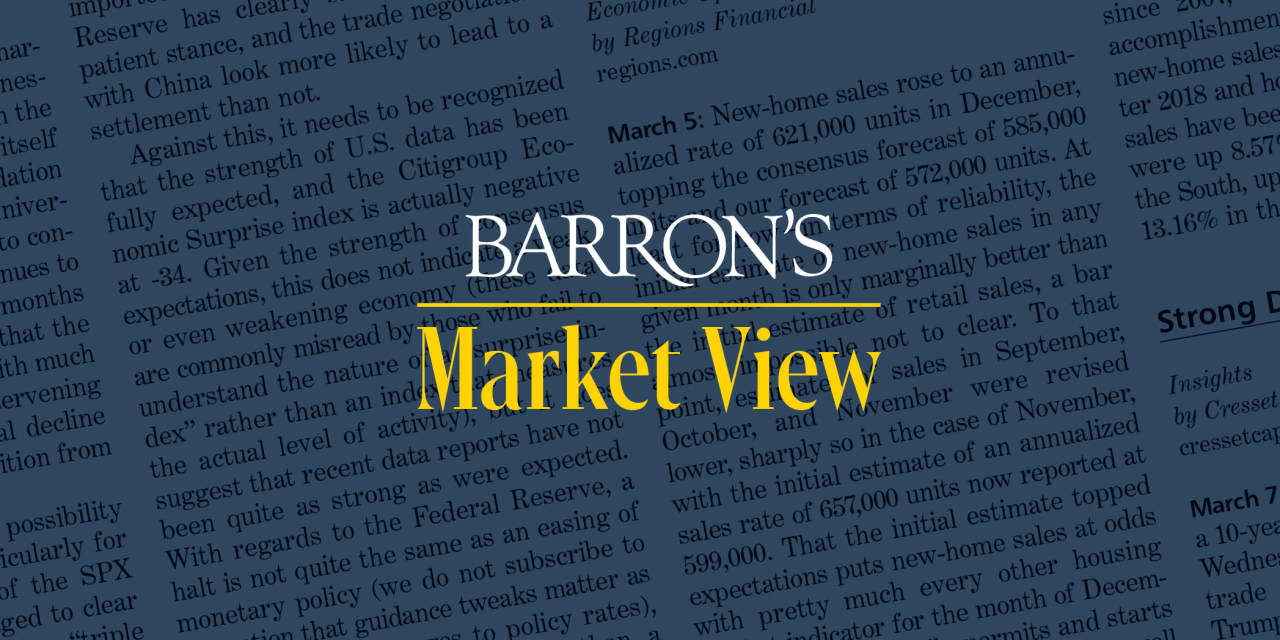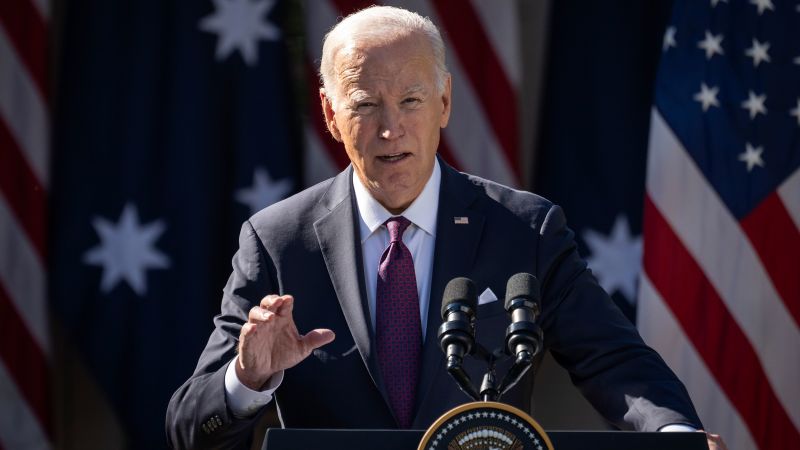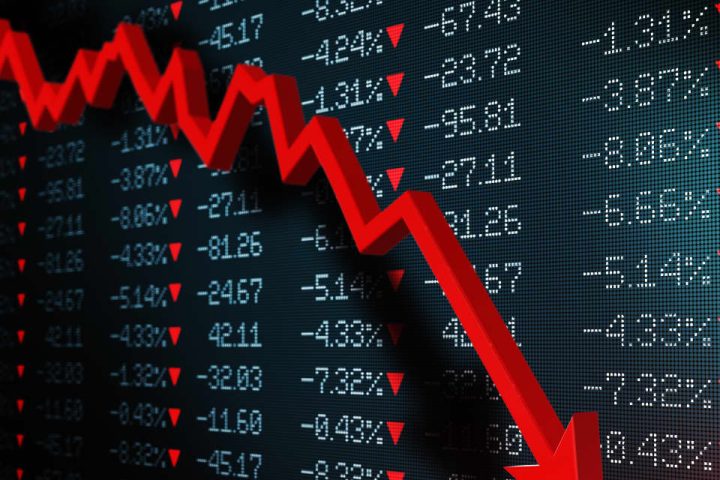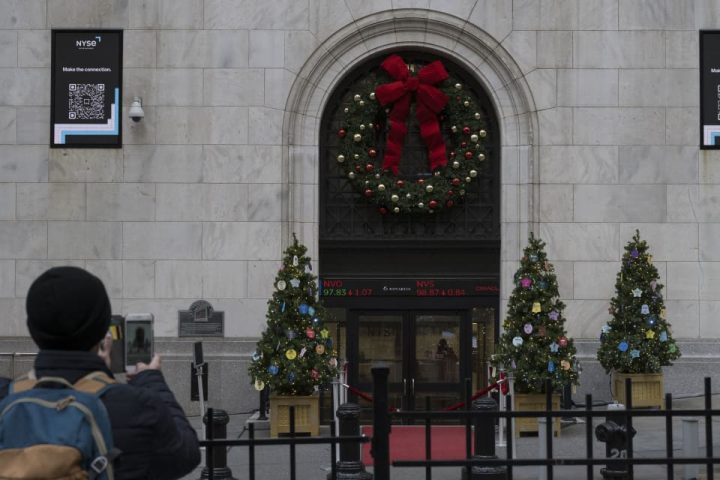This commentary was issued recently by money managers, research firms, and market newsletter writers and has been edited by Barron’s.
China on the Mend
The Daily
Gavekal Research
Oct. 27: For the past five years or so, China has been one disappointment after another for equity investors (although not for government bond investors). It wasn’t that long ago that global investors genuinely cared about Chinese policy shifts and moves in Chinese markets.
Today, China isn’t even an afterthought. Nonetheless, China remains the second-largest economy in the world, and most of the recent data releases seem to indicate that growth may have bottomed in the second quarter, and that the Chinese economy has been on the mend ever since. The government is also busy stimulating and injecting fresh capital into the domestic economy—even though so far the government’s injections have been met with at best lukewarm enthusiasm.
In any event, should China prove to be a catalyst for the stabilization of global equity markets, we would likely see a significant rotation within and between markets. Non-U.S. markets would outperform the U.S., cyclicals and industrials would outperform tech, and yield curves would likely steepen further.
Louis-Vincent Gave
Hedging With Bitcoin, Gold
The Lead-Lag Report
Lead-Lag Publishing
Oct. 27: For the most part, we’ve seen
Bitcoin
act more like a growth stock over the past several years under more normal market conditions. The rally we’ve seen in October, however, looks like something different. There’s a fair amount of noise around the potential approval of a Bitcoin exchange-traded fund by the SEC right now, but when considered in conjunction with other asset classes, I think we’re seeing a structural hedge taking place.
Gold is the one asset along with Bitcoin that is telling this story. The precious metal is currently having its best run since March, right at the same moment that Bitcoin is having its best run since the first quarter. The fact that both of these rallies are happening at the same moment suggests that investors may be flocking to nonfinancial system assets right now, not necessarily to less volatile assets (although the behavior of defensive equities suggests that is probably happening, too).
Michael A. Gayed
ETF Outflows
Highlights
NDR—Ned Davis Research
Oct. 26: Last week, amid rising Treasury yields, tepid earnings reports, and declining equity markets, investors pulled roughly $3.3 billion from stock and bond ETFs. It was the first week with outflows for stocks and bonds together since the week ended on Aug. 18. Prior to that, it last occurred as the market bottomed in September 2022.
Outflows from both stocks and bonds in the same week is an infrequent, but not unusual occurrence. In the past decade, it has happened a little more than two times per year on average and has functioned as an indication of excessive pessimism.
Matt Bauer
Q3 GDP: As Good as It Gets?
Economic Update
Regions Financial
Oct. 26: The initial estimate from the Bureau of Economic Analysis puts Q3 real gross-domestic-product growth at an annual rate of 4.9%, slightly ahead of our above-consensus forecast of 4.8% growth. As we anticipated, consumer spending, government spending, and a faster pace of nonfarm business inventory accumulation were the main drivers of Q3 growth, but contrary to our expectations, the initial estimate shows a slightly larger trade deficit acting as a modest drag on growth.
That is a perfect segue to our standard disclaimer that the initial estimate of GDP in any given quarter is based on highly incomplete source data and prone to meaningful revision.
That said, the initial Q3 print is in line with the firmer tone, at least on the surface, of much of the recent economic data, leaving two alternative views of how to interpret the robust Q3 growth. One interpretation is that the economy is largely immune to the effects of higher interest rates and what many for some time saw as an inevitable recession is off the table. The alternative take is that the burst of growth in Q3 is unsustainable, largely a function of one-off supports that will quickly fade, and that while perhaps less probable than had seemed to be the case, recession is still a possibility in the not-too-distant future.
We lean more toward the latter than the former interpretation.
As anyone who knows the breed can attest, greyhounds can run really, really fast. They just can’t run really, really fast for very long. In that sense, we see the economy as having been more of a sprinter than a marathon runner in Q3, and the payback for that effort will come in the Q4 data.
Richard F. Moody
Meanwhile, in Congress…
Washington Watch
BTIG
Oct. 26: House Speaker Mike Johnson (R., La.) supports extending government funding until January or April 15 if the appropriations bills can’t be passed on time. The government is currently funded through Nov. 17, and that remains the nearest deadline to keep in mind.
Johnson has outlined a plan to begin voting on the appropriations packages as soon as possible, but legislating is complicated, and we will need to see action before we can dismiss shutdown risk. Many have suggested that Johnson securing all GOP votes for the speakership suggests there will be a deal on a government funding measure, but that view lacks an understanding of House GOP demands on top-line spending figures, the political complexity of Ukraine funding demands, and/or an appreciation of timelines on Capitol Hill.
That said, the market should look past a government shutdown, as the risk of default, attached to the debt ceiling, isn’t on the table for this upcoming fight.
Isaac Boltansky, Isabel Bandoroff
To be considered for this section, material, with the author’s name and address, should be sent to [email protected].
Read the full article here







